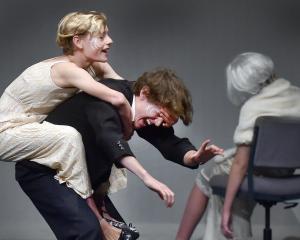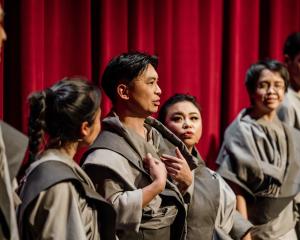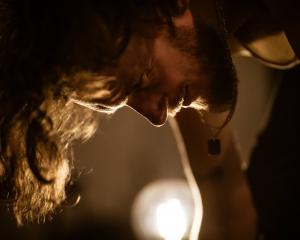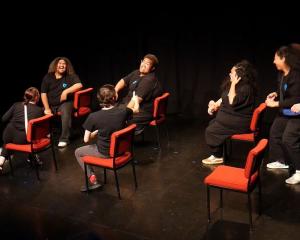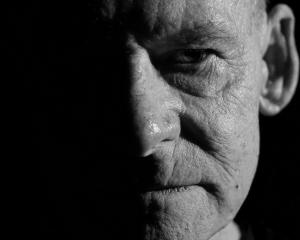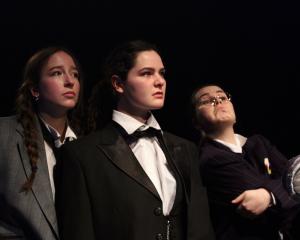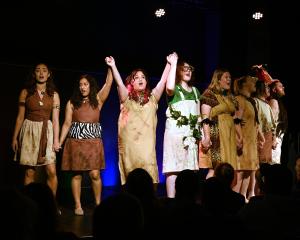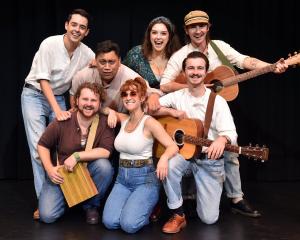New Zealand Ballet's production of The Wizard of Oz had its origins in calamity, but it has been born again to the delight of its choreographers and designers. They tell Rebecca Fox about the work behind the scenes.
Imagine stitching about 3000 handmade butterflies on to gossamer dresses in just five weeks.
That is just one of the painstaking tasks completed to make the Royal New Zealand Ballet's biggest production for the year, The Wizard of Oz, come to life.
Hearing an audience member gasp when the "poppies'' came on stage during opening night made all the hours worth it for the costume department.
"It was such a fashion moment when they came on. When I heard that, I was like all the hard work was worth it to get that reaction,'' costumier James Kelly said.
Kelly, who only recently came to New Zealand after 20 years with the Royal Ballet in the United Kingdom, was charged with bringing to life the designs and concepts of the ballet's artistic director and Oz choreographer Francesco Ventriglia and Oz set and costume designer Gianluca Falaschi, of Italy.
While the work was new, it was based on a ballet Ventriglia choreographed while in Florence with Maggio Danza.
The story of Dorothy and her friends' magical journey to the Emerald City by L. Frank Baum (originally published in 1900) had held a special place in Ventriglia's heart since his mother read the story to him while he was in hospital as a 6-year-old.
"It really touched my heart ... when I became a man and a ballet dancer, a choreographer, I decided to read again my book.
"I decided to relate this story with my message with the only vocabulary I had, so I put together the ballet.''
But in 2013, the night after the dress rehearsal, before the opening night for the new one-act ballet, part of the ceiling collapsed and the theatre was shut for several months.
"The costumes went into storage.''
'Oz' reborn
Fast-forward a few years and Ventriglia joins the RNZB and the opportunity to restage The Wizard of Oz becomes a reality.
The sets and costumes were sent for and Ventriglia began to rework the ballet to reflect New Zealand, the company and where he was at now, while staying true to Baum's original work.
One act became two and the "jazz age'' music of French composer Francis Poulenc, which Ventriglia described as "a greatest hits of Poulenc'', compiled by RNZB company pianist Michael Pansters, was chosen to accompany the dancers.
Choreography included classical and contemporary ballet, with Dorothy going from bare feet to pointe shoes, heels and even tap shoes.
"Every character speaks a variety of vocabulary. For the dancers, this was a big challenge.''
As the original designer, Falaschi, who was influenced by trips to the theatre with his father when he was a child, becoming involved in theatre and ultimately opera, was brought back to redesign the set and costumes for the new production.
"It was a gift to come to New Zealand. Never in my life did I think I would ever have seen New Zealand. It's beautiful.''
Ventriglia was his "muse'' for the detailed design sketches he created and given his story of hearing The Wizard of Oz in hospital, Falaschi tried to "work like he was a child''.
The sky-like set was what he imagined a child would see lying in a bed imagining their escape.
He was also inspired by his own past with the cage design in Wizard of Oz taken from the cage his grandmother had on her terrace.
"I felt free to represent the interior world, not represent the realistic world. It is a fantasy world.''
Ventriglia said Falaschi's opera and movie background meant he solved problems differently from what you would expect in the ballet world.
"There's tutus for the porcelain world, Munchkins in 1930s-style bathing suits, bare-chested flying monkeys, butterfly-gowned good witch, exaggerated bustle and black corset for the wicked witch and of course loads of green sequins, red glitter and gingham.''
The wardrobe department
It is that fantasy world Kelly had to re-create in reality, often relying on texts in Italian, which he doesn't speak, to correspond with Falaschi before he came out from Italy.
With Falaschi's detailed design sketches posted on the wall of the wardrobe department, the team of four permanent staff got to work bringing them to life.
All the costumes were bespoke and made to fit the dancers like couture. And all but some digital printing was done in-house.
First they assessed the costumes, which had come from Italy, working out which needed to be redesigned or adjusted for the new cast and story.
The most labour intensive costume was that of Glinda, the Witch of the North, who was clothed in a wispy design covered in thousands of handmade butterflies.
Three costumes were needed for each dancer performing the role so 3000 butterflies needed to be sewn on.
Each butterfly was handprinted and had sequins glued on to it before the butterflies were sewn on to the costumes, an effort that made the dresses possible, Kelly said.
"The dress was simple, but the butterflies gave it such a wonderful effect.''
Given its delicateness, the costume required intensive repair after each show, as the dancers were lifted and it did not hold up well.
"You just deal with it, if you want ethereal lovely floaty dresses.''
Also labour intensive was the Witch of the West's costume, as it had a very detailed bodice with satin inserts which required skill to fit precisely on each dancer as well as leave space for any future adjustments.
The tin man's revealing costume with strategically placed cogs and spokes required three fitting sessions with each dancer to ensure the "tin'' was sewn on in the right places.
"They only had their dance belt on so we had to make sure it wasn't going to rip and expose too much.''
A completely new design was Dorothy's gingham tutu - believed to be the first of its kind in the world. It continued the theme of her gingham dresses, complementing the colour of the scene.
"I've spoke to costume makers back home, and in their 20 to 30 years they've never seen one.
"It was her girlie moment. It was really pretty.''
The original teapot tutus were handpainted in Italy, which was not an option on a New Zealand budget, but digital technology came to the rescue with a Wellington company printing the porcelain design on to material which created the tutus.
Added to the drama was the size of the tutus - the Porcelain Princess has one 18 inches wide out each side, and the teapots 16 inches (14 inches was the average size of a tutu).
"It enormous. We had to work out how they could dance and keep them flat.''
The standout of the show - the poppies - were re-created from the original dresses.
"I've had people say they want one and can I make them one.''
The pattern for the European-inspired dresses was cut from the originals and then resewn.
They were the hardest design to come up with, requiring more direction from Falaschi.
"I didn't know what to do to make them work better. Once he gave me this reference it was so clear. I love the poppies.''
The outcome
Falaschi was more than happy with the outcome.
"To finally see the show was incredible. Before it went on stage it was our world, but now the audience has seen our vision.
"Finally, it's been born. I'm very happy and very proud of the dancers and all of in the organisation. A point of my life where past and future link together.''
Bringing the show to fruition had been artistically a great challenge but incredible fun, he said.
"It was more of a journey, more human for me. We wait to see this Wizard of Oz on stage since 2011; so long.''
The ballet
The Wizard of Oz, May 21, Regent Theatre.


